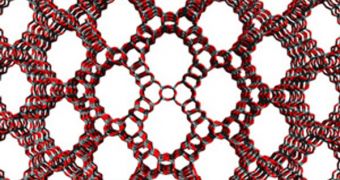Certain compounds of silicon, aluminum and oxygen, known as zeolites, are essential to such products as kitty litter, detergents and gasoline, and, as such, important for the modern-day lifestyle we are accustomed to. There are, at this point, about 200 known types of the stuff, but experts have hypothesized for a long time that many other forms of the chemical may exist. Now, some two decades after the idea was first thought of, a team of experts at the Rice University has managed to devise a computational model that shows the wide variety of zeolites that could be out there today.
The RU John W. Cox Professor in Biochemical and Genetic Engineering, Michael Deem, has been in charge of the new investigation. The scientist is also a professor of physics and astronomy. In a paper posted in the latest online issue of the American Chemical Society's Journal of Physical Chemistry C, and entitled “Computational Discovery of New Zeolite-Like Materials,” the expert reveals that as much as 2.7 million forms of zeolite-like materials may exist in nature right now. Of that amazing number, some 314,000 are close enough to the known compounds to allow for their synthesis.
Deem's main problem at this point is developing a method of converting the hypothetical zeolites into real ones. “A couple of things have to happen. One is that we have to identify materials that look like they would have good properties, and then we have to find a synthesis mechanism to make those materials,” he says. Speaking about the selection process that narrows down the 2.7 million possibilities to a few materials with desired properties, he adds that, “It depends on the properties we're looking for. We have some ideas of what's practical, but of course we would love to work with other people.”
The team needed about three years to count and archive all of the possibilities, which were determined using the US National Science Foundation's (NSF) TeraGrid node at Purdue, augmented with the Zefsa II software. “I think we were the biggest user of computer time there in 2006, and the fifth- or sixth-largest on the TeraGrid. At Purdue, we were making use of unused computer cycles, like the SETI@home project that searches for extraterrestrial life using people's home computers. We finished around the start of 2009,” Deem concludes.

 14 DAY TRIAL //
14 DAY TRIAL //